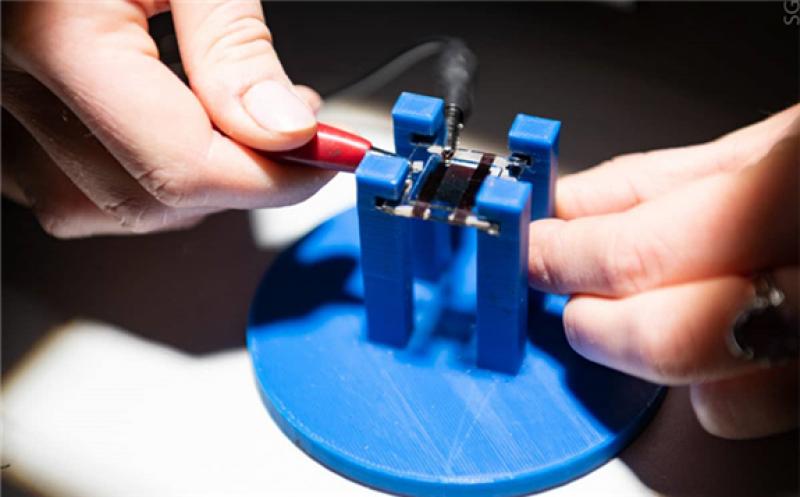Scientists from Russia's National University of Science and Technology (MISiS) and Italy's Tor Vergata University have increased the efficiency of an inverted perovskite solar cell by around 2%, via the use of two-dimensional titanium carbides with high electrical conductivity.

The researchers used MXenes, which is a new family of two-dimensional transition metal carbides. These compounds, which take their name from their graphene-like morphology, are made via selective etching of certain atomic layers from a bulk crystal known as MAX.
“The addition of a small amount of titanium carbide-based MXenes to light-absorbing perovskite layers improves the electronic transport process and optimizes the performance of the solar cell,” the researchers said.
The scientists applied the technique to a perovskite cell with an inverted configuration (p–i–n), based on a nickel(II) oxide (NiO) hole transporting layer. The reference cell initially had a power conversion efficiency of around 17%.
The addition of MXenes as a doping agent allowed the scientists to tune the energy level alignment at the interfaces between the perovskite layer and the charge transporting layer. At the same time, this helped to passivate trap states within the cell structure, resulting in improved charge extraction and collection at the electrodes.
“We demonstrate a useful role of MXenes doping both for the photoactive layer (perovskite) and for the electron transport layer (fullerenes) in the structure of solar cells based on nickel oxide,” said researcher Anastasia Yakusheva. “On the one hand, the addition of MXenes helps to align the energy levels at the perovskite/fullerene interface, and, on the other hand, it helps to control the concentration of defects in the thin-film device, and improves the collection of photocurrent.”
The cell doped with the compound showed an improved efficiency of 19.2%, the Russian-Italian group said. They described the doping technique in “Transition metal carbides (MXenes) for efficient NiO-based inverted perovskite solar cells,” which was recently published in Nano Energy.
This article is reproduced at www.pv-magazine.com